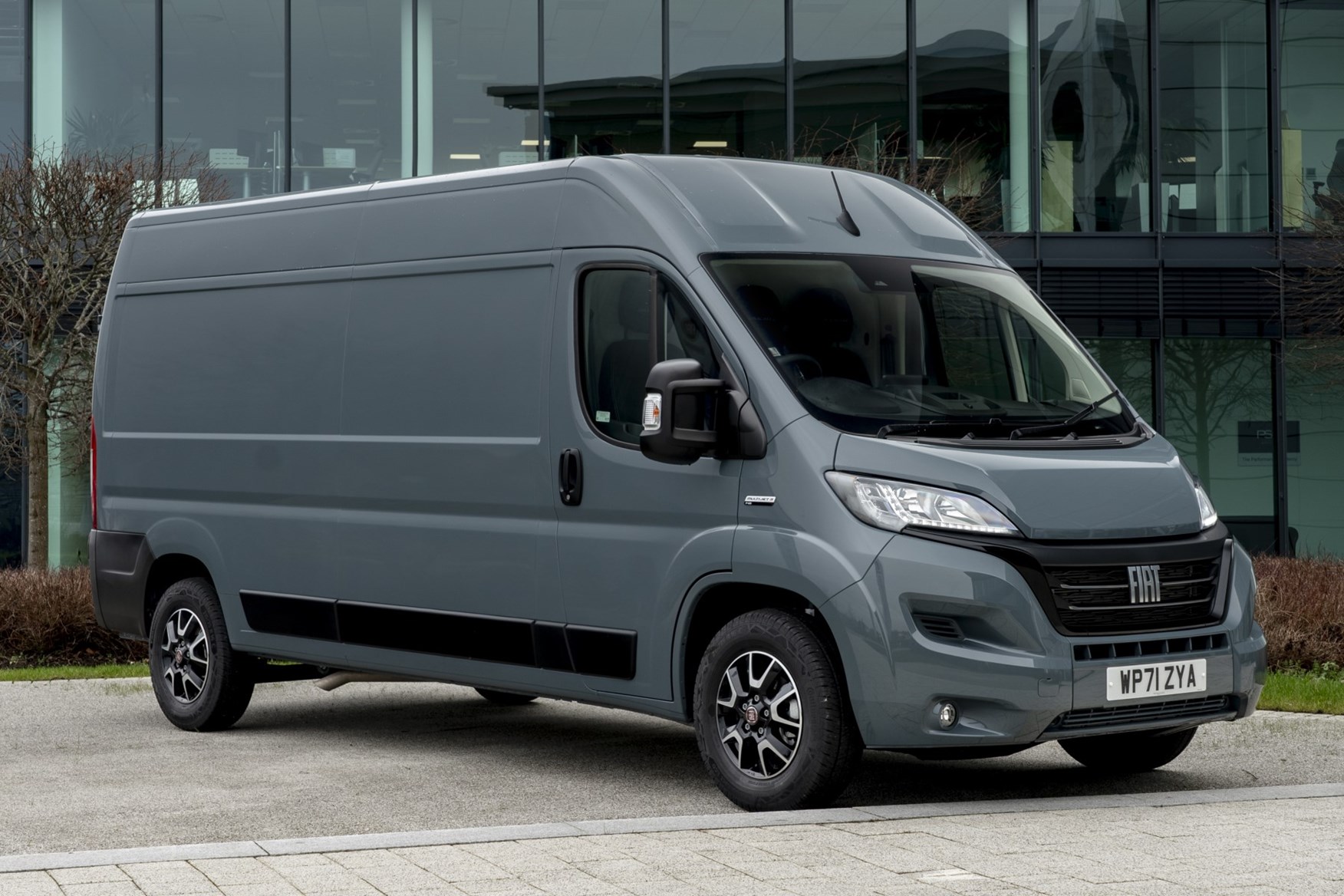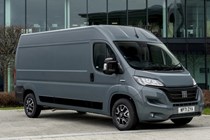Euro NCAP has revealed safety evaluations of the best and worst commercial vans. Prompted by last year’s observations of less than impressive levels of safety equipment fitted to vans, this year’s assessments provide a point of comparison.
Though they show there has been improvement in safety overall, the definitive conclusion is that there’s plenty of room for improving van safety.
Unlike passenger vehicle safety, which is measured in stars, vans are given bronze, silver, gold and platinum status. This year’s results saw the Fiat Ducato become the first van to earn the top platinum rating, improving from a bronze rating last year.
The Ducato achieved an 88% safety score, for featuring a new autonomous emergency braking (AEB) system and AEB for cyclists, as well as improving lane support capability, with Lane Keep Assist (LKA) integration, helping to steer the van back into its lane, should it veer off.
Focus on pedestrian safety
With many owner operators investing in their vans for business purposes, yet also using them as a family workhorse, these vehicles spend a lot of time on the roads. Given the recent changes in the Highway Code, van drivers also find themselves more liable in the event of an accident with a pedestrian or cyclist.
New advanced driver assistance systems (ADAS), where technology aids drivers to be aware of dangers in their blind spot, or around the vehicle while manoeuvring, are slowly making their way into vans.
However, Euro NCAP feels the transition isn’t happening quickly enough and hopes annual evaluations and benchmarked ratings will accelerate change to keep drivers and other road users safe. Scores issued are based on the availability of emergency braking, speed limiter, lane support, and seatbelt reminder systems, as well as the performance of active safety technology.
How some vans have improved since 2021
The Renault Master and Vauxhall Movano received bronze ratings but the Nissan Interstar, as known as the NV400, was ‘not recommended’, due to the lack of an autonomous emergency braking (AEB) feature.
After the Ducato, the Renault Trafic has one of the most significantly improved safety ratings, since last year’s testing. With a reliable AEB system now integrated, the Trafic has been awarded a silver rating, up from ‘Not recommended’ in 2021.
Why testing is important
Established in 2007, Euro NCAP is an independent body, assessing crash and safety capabilities on new vehicles, to provide consumers with informed guidance on their vehicular purchases. Where Euro NCAP once used to sporadically test vans, since 2021, it has commenced comprehensive testing of both standard and optional safety equipment and assessing each vehicle on the best that can be achieved for the vehicle.
Euro NCAP’s Secretary General, Michiel van Ratingen, says, ‘We are seeing promising signs that commercial vans are being upgraded with more advanced safety systems, closing the gap between passenger car and commercial vehicle segment. While there is a way to go, we are inspired by the improvements – some modest, some impressive – that we have seen in the last year.’
Van sales in the UK continue to increase dramatically—26% against the mere 6% rise in new passenger vehicles.

Fiat Ducato’s Platinum safety rating
Thatcham Research’s chief research strategy officer, Matthew Avery, said: ‘Fiat has completely raised the bar this year and we welcome the brand’s response to our calls for improved safety on vans. To jump 60% from one assessment to the next is very impressive and we congratulate the brand for achieving the world’s first Platinum rating.
‘It is also good news that this Platinum rating has been achieved by a shared van platform within the Stellantis Group. We hope the Ducato’s features will be made available on these vans too.
‘The 2022 results clearly show fleet operators and business owners which vans they should be choosing. Specifying ADAS technology has a value. It can help prevent an expensive vehicle being off the road for repairs, drivers being off sick, and any reputational damage that can be caused to a company after an accident.
ADAS has the power to keep businesses moving and delivering for their customers. The fact remains it’s difficult to buy a new car without Advanced Driver Assistance Systems (ADAS) technology, whereas it’s still difficult to buy a van with ADAS.’
What is ADAS?
ADAS is the acronym for ‘advanced driver assistance system(s)’. It’s a collective word for a suite of different technologies that use similar components to mitigate collisions. To improve driver visibility and alert a driver to a potential road hazard, multiple sensors around the vehicle keep extra ‘eyes out’ for danger.
From autonomous emergency braking, where the radar monitoring the cars in front of the vehicle will sound an alert, or physically begin braking if the car’s computer calculates an imminent collision, to blindspot and/or pedestrian detection, ADAS features have been proven to reduce accidents and by default, insurance, considerably.
Aren’t the most important safety features standard on a vehicle?
You’d be forgiven for thinking that in order to sell a vehicle, safety features would be required to be provided as standard by the law, just as seatbelts are. However, technology is moving faster than legislation can keep up and so many of the sensor-based safety features, which are expensive to fit to vehicles, aren’t always included on the basic model.
European regulation has mandated autonomous emergency braking on all new vehicles built from May 2022, but reversing cameras, lane-keep assist features, blindspot detection, drowsiness detection and cross-traffic alerts are still fitted based on car makers’ individual safety policies.
Also read:
>> Read about Parkers Best Electric Vans for 2022
>> New Renault Trafic gets facelifted upgrade
>> Van limits and speed limits explained
Just so you know, we may receive a commission or other compensation from the links on this website - read why you should trust us.






